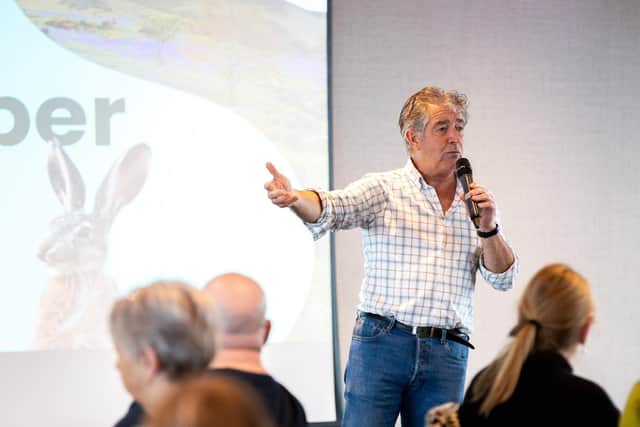Construction and nature don’t need to be set up as competing interests - Tony Juniper & Bartek Staniszewski
Often, these stories overlap, with the apparent clash of priorities presenting a choice between a healthy and vibrant natural environment or more built environment. However, the two can be integrated.
This is already reflected in us having official measures to do both, with local targets driving home construction while, at the same time, legally-binding targets require the decline in species abundance to be halted by the end of this decade.
Advertisement
Hide AdAdvertisement
Hide AdThe way housing and environment goals are presently approached, however, doesn’t make it easy to address both issues in a coherent way. Instead, and despite positive new policies, construction and nature are often set up as competing interests, leaving developers and those concerned about the state of nature feeling equally dissatisfied. We know though that this is not inevitable, and that if schemes are designed to be nature-positive at an early stage, the opposite can be the case.


A big part of the reason why we might wish to invest in this more integrated approach is because of how people are drawn to live and work near thriving nature and tend to be happier and healthier when fortunate enough to do so.
For example, Barcelona’s ongoing Superilla project of creating green spaces through the city is projected to cut antidepressant use and reduce visits to mental health specialists in the city by 13 per cent. Poundbury, too, is one of the most resident-satisfied settlements in the country and reveals what can be achieved when new developments are created with nature in mind from the start.
As well as contributing to more beautiful places, nature can contribute to better overall environmental quality as well. Up to 36,000 people die in the UK every year due at least in part to air pollution. This can be ameliorated through the presence of natural areas near where people live, reducing the rate of respiratory disease by up to five times.
Advertisement
Hide AdAdvertisement
Hide AdIndeed, despite pockets of good practice, there are still stark inequalities in the quality of the environments experienced by people across the UK with more than one third of us, and especially those living in the most deprived communities, lacking access to green space or water – such as a lake or river – within a 15-minute radius of where they live.
Putting nature at the heart of places where people live and work also helps to mitigate the impacts of a dramatically changing climate. Urban trees, for example, not only provide shaded refuge for people and wildlife in summer; they cool the surrounding air by up to four degrees and, in this country alone, remove 500,000 tonnes of CO2 equivalent.
With all this in mind, it seems that one obvious priority would be to bring nature and development planning much closer together right from the start. Natural England, for instance, has found that the projects that have the smoothest passage to approval and construction are those where nature is factored in from the very beginning of the design process. This should come as no surprise when such an integrated approach produces better places to live as well as complying with laws and policies that emphasise the importance of natural recovery, thereby creating fewer questions for planners and NIMBY campaigners to complain about. Opposition to local development falls by half when it is designed to be in keeping with the local environment.
There are new tools to make nature-friendly development happen. February saw the introduction of Biodiversity Net Gain for housing development and the legal requirement to increase habitat by at least 10 percent. At the same time, the new spatial planning process to come up with Local Nature Recovery Strategies will lead to opportunities for more housing and nature recovery.
Advertisement
Hide AdAdvertisement
Hide AdMoving beyond this to place nature recovery at the heart of future planning could be transformative, both in increasing the speed with which new developments gain consent and how they feel when completed, even allowing urban areas to contribute to the Nature Recovery Network (NRN) that Natural England is currently establishing across the country.
Blending developments into the NRN’s ‘green infrastructure,’ alongside hard infrastructure and food production, offers the prospect for achieving outcomes that seek both development and nature recovery. Not one or the other.
New policies and laws alongside more good examples of how this might be done in practice herald a new period of positive opportunity.
Tony Juniper CBE is chairman of Natural England and Bartek Staniszewski is a senior researcher at the Bright Blue think tank.
Comment Guidelines
National World encourages reader discussion on our stories. User feedback, insights and back-and-forth exchanges add a rich layer of context to reporting. Please review our Community Guidelines before commenting.